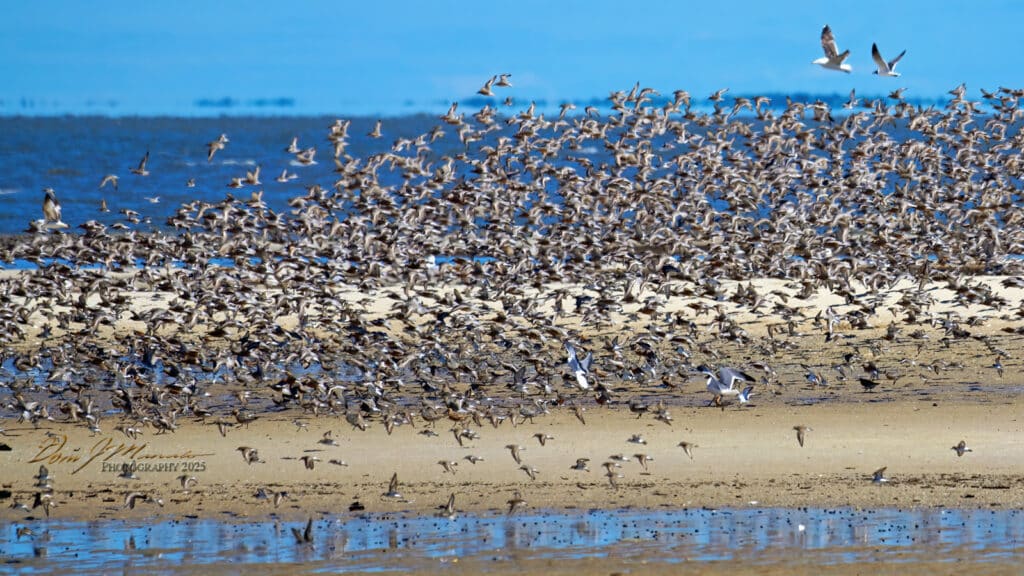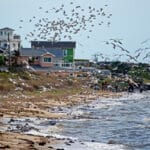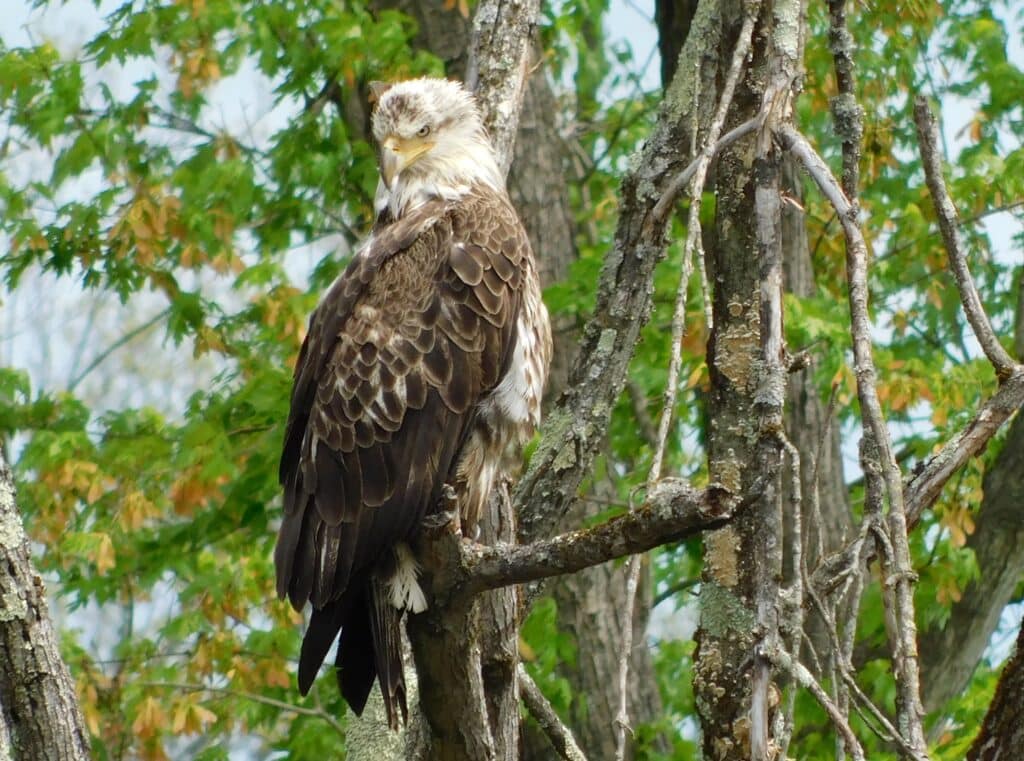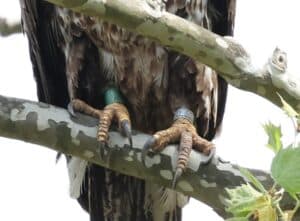ReTurn the Favor-Helping Horseshoe Crabs one at a time
by: Sarah Neil, CWF communications intern

Horseshoe crabs are ancient creatures, having first evolved hundreds of millions of years ago. Since then, they haven’t changed much, but the world around them certainly has. Human activity has taken a toll on horseshoe crabs- for years, people have been harvesting them for use as bait and in medical applications. New Jersey now has a moratorium preventing this from continuing, but their population is still lower than it should be. Luckily, something as simple as flipping a horseshoe crab off of its back can help to restore their numbers. I recently had the privilege of joining Larissa Smith, Senior Wildlife Biologist at CWF, on a trip to the Delaware Bay. In partnership with ReTurn the Favor, she regularly visits beaches that are rife with stranded horseshoe crabs and helps them get back to the water. At the nightly high tide, hundreds of crabs come up to shore to spawn, but when the tide goes out, many of them get stuck on their backs or buried in vegetation, unable to return to their habitats. Rescuing them can be as easy as turning them back onto their legs, but others need a bit more help.
On this day, we started with just a few unfortunate crabs that needed assistance getting off of their backs. We picked them up, flipped them, and off they went. But then, as we turned from the beach to a marshy creek, we were met with hundreds of crabs trapped in the grass. At first, it seemed like we were too late to save them, but as we went along, we found that almost every single one was still alive. So, we wrestled them out of the greenery and carried them back down to the water.
It was a lot of work, but we soon managed to rescue over 100 horseshoe crabs from that section alone. Most of them were females, as evidenced by their large size and pincers. Each one that survived represented a potential new generation of crabs. Female horseshoe crabs can lay around 80 thousand to 100 thousand eggs per year, most of which become food sources for other animals like laughing gulls, which were flocked heavily on the beaches that day. While it’s a bit unfortunate for the crabs, the loss of some of their eggs helps to keep the ecosystem running smoothly.

In just a few hours, we helped 198 horseshoe crabs return to the bay, and we had a lot of fun doing it. The effort to restore the populations of New Jersey’s horseshoe crabs is full of obstacles, but there is also so much hope. Just about anyone can flip an overturned horseshoe crab, and the feeling that comes along with doing so is wonderful. While the horseshoe crabs may not be able to thank us, we can always tell that they greatly appreciate our support.




































